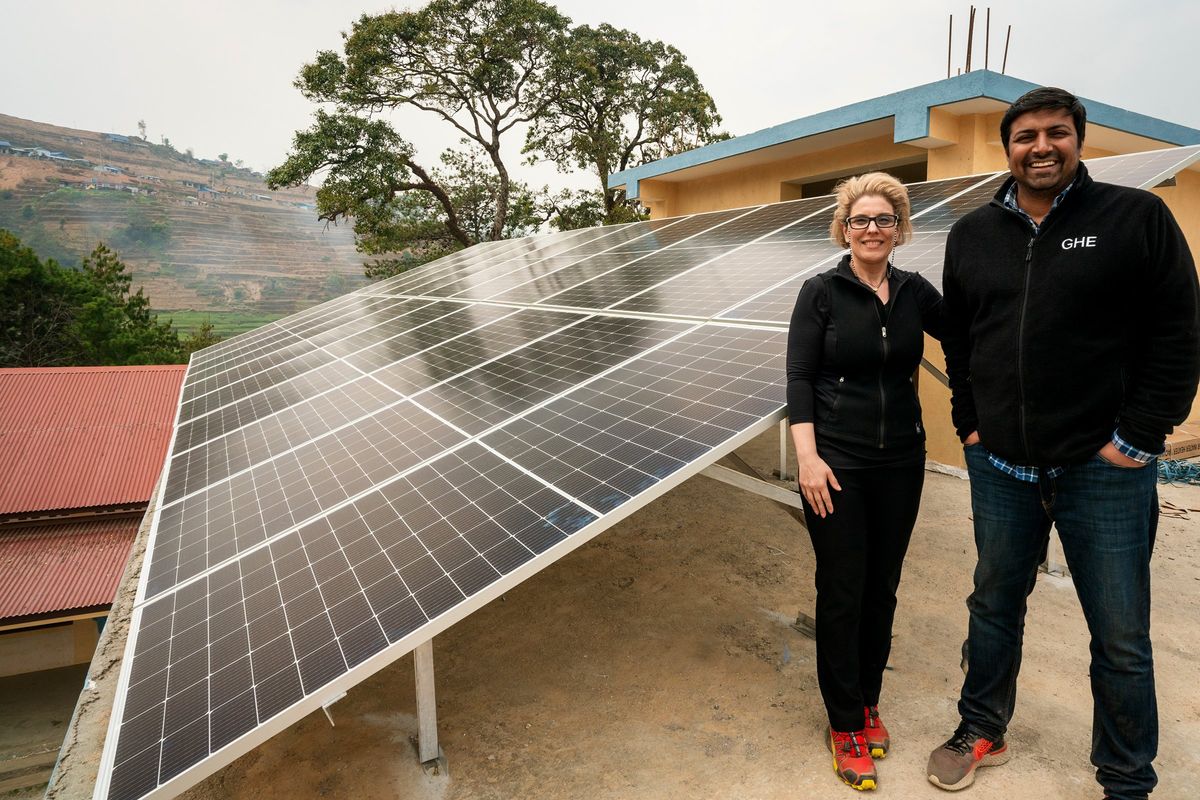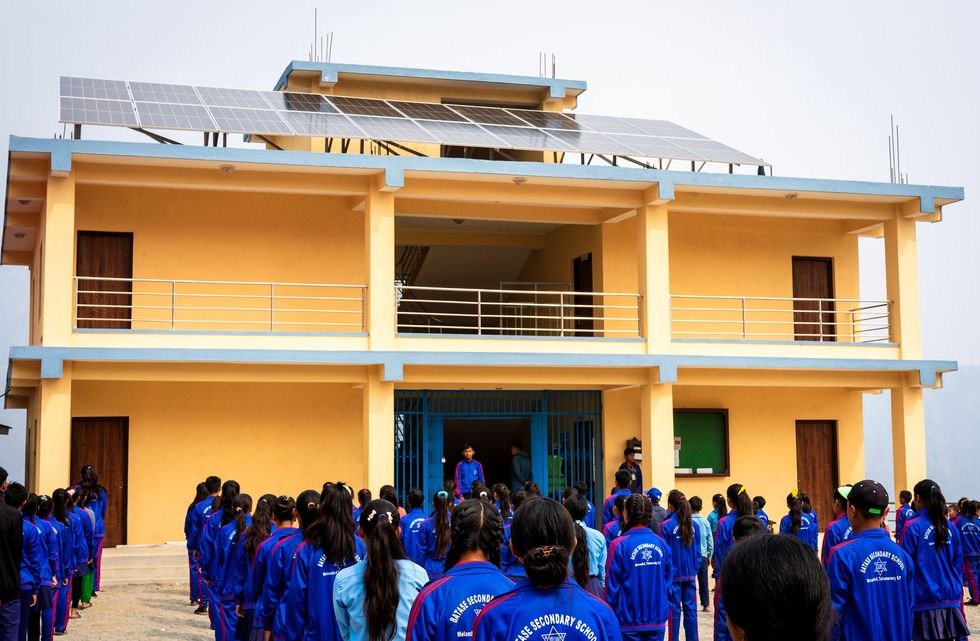IEEE Society Restores Electricity To a Nepali School

Until recently, the residents of Melamchi, Nepal, cooked meals and heated water for bathing over a wood-burning stove. Schoolchildren didn't have access to the Internet or reliable electric lighting for studying after dark.
That all changed this year, after a team of IEEE volunteers traveled to the village and installed photovoltaic panels, a battery storage system, and a solar water heater at the Shree Batase Secondary School in Melamchi, which is about 45 kilometers from the capital city of Kathmandu.
The effect that access to reliable electricity has had on the village is amazing," says Morgan Kiani, an engineering professor at Texas Christian University, in Fort Worth. The IEEE senior member led the team of engineers that installed the systems on behalf of IEEE Smart Village, a program that brings electricity-as well as educational and employment opportunities-to remote communities worldwide. Smart Village is one of the donor-supported initiatives of the IEEE Foundation. The project in Nepal was supported by funds Kiani raised through the IEEE Industrial Electronics Society.
Her team collaborated with Global Himalayan Expedition (GHE), an organization that couples tourism with humanitarian technology to provide solar energy in off-grid communities.
Restoring electricity after an earthquakeThe idea for the project came from a chance encounter in a shopping center. Kiani traveled in 2018 to Cairns, Australia, for the IEEE International Symposium on Industrial Electronics. While in Cairns, she visited a store that sold purses and clothes made by Melamchi villagers. The owner told her sales of the products supported the village's school, which had been destroyed by an earthquake in 2015. The earthquake severely damaged Melamchi's power lines. Although the school had been rebuilt and new power lines had been installed, the electricity wasn't reliable.
The school is the center of the community," Kiani says. More than 200 children attend class there, and some even live there because their home was destroyed by the earthquake, or their parents died in the disaster.
The story really touched my heart," she says, and she made it her mission to assist the villagers.
While attending IEEE Smart Village's Power Africa conference in 2022 in Kigali, Rwanda, she met GHE founder Paras Loomba. Kiani shared Melamchi's story with him, and the two decided to team up to help the village.
Bringing reliable power to a remote community The photovoltaic panels connect to a battery storage system, which consists of a 38.4-kWh battery bank of 16 200-amp batteries and a voltmeter. IEEE Smart Village
The photovoltaic panels connect to a battery storage system, which consists of a 38.4-kWh battery bank of 16 200-amp batteries and a voltmeter. IEEE Smart Village
To decide which system would best serve the town, Kiani and Loomba met virtually with school administrators and members of the community. Not surprisingly, the leaders said their priorities were access to reliable electricity and hot water.
The IEEE volunteers installed an 11-kilowatt photovoltaic system on the roof of the school's main building. A 200-liter solar water heater was installed in the school's dormitory. The panels connect to a battery storage system, which consists of a 38.4-kWh battery bank of 16 200-amp batteries and a voltmeter. Hybrid inverters convert the solar panels' DC power to AC so it can be used by light fixtures and household appliances.
Access to reliable power has empowered not only the children but also the other villagers. They now have reliable Internet-which opens up another world for educational content.
Kiani and her team trained teachers and other school staff members how to perform maintenance and how to monitor the health of the solar panels and battery bank. An online portal allows the staff members as well as Kiani and Loomba to monitor the system. The portal-which displays information such as the amount of electricity being produced, consumed, and stored-is included with the solar panels and is accessed through the manufacturer's website.
If staff members have questions or concerns about the system, they contact Kiani through messaging platforms WhatsApp or Viber.
Educational resources and a new source of incomeThe project has improved the town's educational system, officials say. The school has had a tough time finding qualified teachers willing to travel to the remote village. Now that the school has reliable Internet access, students can be taught remotely.
Teachers also have access to free online educational resources from IEEE, such as the TryEngineering and REACH (Raising Engineering Awareness through the Conduit of History) programs, Kiani says. TryEngineering offers hundreds of lesson plans, hands-on activities, and other resources. REACH helps teachers explain the history of technologies used in agriculture, health care, and transportation.
Access to reliable power has empowered not only the children but also the other villagers," Kiani says. They now have reliable access to the Internet-which opens up another world for educational content."
 More than 200 children attend class at the Shree Batase Secondary School, and some even live there because their home was destroyed by the earthquake, or their parents died in the 2015 disaster.IEEE Smart Village
More than 200 children attend class at the Shree Batase Secondary School, and some even live there because their home was destroyed by the earthquake, or their parents died in the 2015 disaster.IEEE Smart Village
The new technology is providing a source of income for the school as well: People pay a small fee to charge their cell phone or use the Internet at the school. Thanks to funds raised by the IEEE Industrial Electronics Society, a projector and other equipment was purchased for the school, which holds movie nights and charges attendees a small fee.
The school can use the money to purchase batteries and other replacement parts.
It's really amazing," Kiani says, how something many people take for granted has changed the lives of the residents of Melamchi."
"This project wouldn't have been possible without members from IEEE Smart Village and the IEEE Industrial Electronics Society or Paras Loomba and his team," she says.